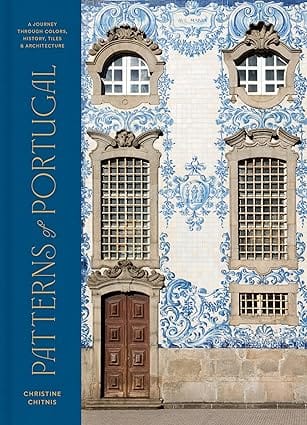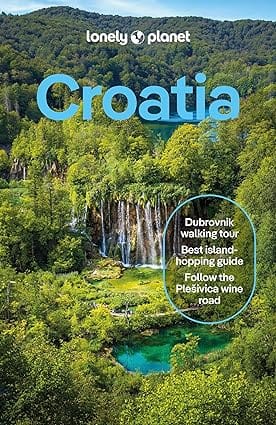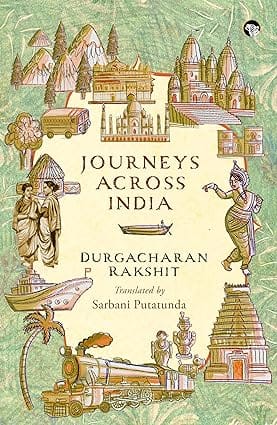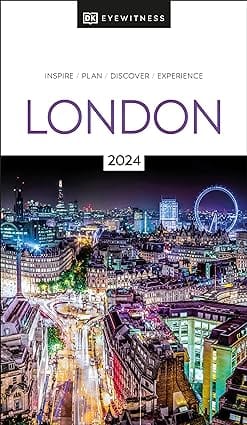WELCOME TO MIDLAND BOOK SHOP!
SHOP FOR
- Contemporary Fiction
- Contemporary Fiction
- Children
- Children
- Comics & Graphic Novels
- Comics & Graphic Novels
- Non-Fiction
- Non-Fiction
- Fiction
- Fiction
Shop No.20, Aurobindo Palace Market, Hauz Khas, Near Church +91 9818282497 | 011 26867121 110016 New Delhi IN
Midland The Book Shop ™
Shop No.20, Aurobindo Palace Market, Hauz Khas, Near Church +91 9818282497 | 011 26867121 New Delhi, IN
+919871604786 https://www.midlandbookshop.com/s/607fe93d7eafcac1f2c73ea4/6468e33c3c35585403eee048/without-tag-line-480x480.png" [email protected]9780593578193 661927d79fd1739d5b990683 Patterns Of Portugal A Journey Through Colors, History, Tiles, And Architecture https://www.midlandbookshop.com/s/607fe93d7eafcac1f2c73ea4/661927d89fd1739d5b990717/91ckommvo8l-_sy425_.jpg 9780593578193
About the Author
Christine Chitnis is a writer, a photographer, and the author of Patterns of India. As a contributor to publications including the New York Times, Elle, and Condé Nast Traveler, Christine has earned a reputation as a multi-talented storyteller.
Excerpt. © Reprinted by permission. All rights reserved.
Introduction
Tucked away on the edge of the Atlantic, where dappled sunlight and ocean breezes kiss the shores and old-world romanticism abounds, Portugal’s diminutive size defies its weighty historical significance. Tales of conquering heroes and seafaring legends are reflected through its richly tiled artworks, storied architectural elements, and the Roman and Moorish ruins that lie scattered throughout its bucolic countryside. Once one of the richest empires in Europe, Portugal has also been one of the continent’s poorest countries, experiencing a drastic swing of fortunes through its centuries of civilization. Weaving from the honeyed fields of Alentejo and sparkling shores of the Algarve, to the heart of cosmopolitan Lisbon and verdant valleys of the Douro, color and pattern bring to life the complex history of Portugal, a country whose fortunes have always been tied to the sea.
In 1139, during the Reconquista—in which Christian crusaders reconquered the land from the Moors—the Kingdom of Portugal was founded by King Afonso Henriques and what followed was one of Europe’s longest-lived, wealthiest empires. As the birthplace of the Age of Discovery and center of the first global empire, Portugal made its mark on every corner of the globe through colonization, trade, slavery, and commerce during its mighty and ruthless reign. Thanks to their famed explorers Bartolomeu Dias and Vasco da Gama, the Portuguese were the first Europeans to cross the Indian Ocean, a huge win in terms of gaining access to the lucrative spice route. By the sixteenth century, Portuguese rule had stretched around the globe, and because of the enormous wealth (and inspiration) drawn from Brazil, Goa, China, Mozambique, Angola, and the East Indies—to name just a few—the country entered a golden age of art, most visible through the architecture and surface design of its lavishly commissioned palaces, churches, and monasteries, and its plentiful use of colorful ceramic tiles called azulejos.
As a photographer, I was instantly drawn to Portugal’s unique palette and rich use of pattern, and especially intrigued by the way the same hues seem to echo throughout the country. The blue-and-white azulejos are reflected in the sunbaked beaches and enchanting blue water of the Atlantic coast. The fuchsia and gold of bougainvillea in bloom are mirrored, though timeworn and softened, in the colorfully painted facades of pastel homes. Many of Portugal’s decorative motifs include elements from battles, sea voyages, conquests, village life, and Catholicism, the country’s predominant religion. A famous example can be seen at Porto’s São Bento Railway Station, where Jorge Colaço, one of Portugal’s foremost azulejo artists, created blue-and-white panels of tiles illustrating scenes of daily life, such as the hay harvest, alongside murals of the country’s history, including one particularly detailed rendering of Prince Henry the Navigator during the conquest of Ceuta in North Africa.
Many of the colors seen in the country’s architecture and art find their inspiration in the palette of Portugal’s natural world. From Costa Azul to the Algarve, the southern coast is known for its strikingly blue waters, pristine beaches, and plunging sandstone cliffs. The landscape is echoed in the bleached white buildings, terra-cotta roofs, and simple architecture of the area’s charming coastal towns. Clean lines and soothing colors abound. The Mediterranean color scheme creeps into urban life as well, with Lisbon’s sunny yellow trams winding through the streets, and its buildings covered in sea-green and sky-blue azulejos. As you venture north, the palette drifts toward the lush greens of the terraced Douro Valley and verdant Vinho Verde region, and the deep golds, burgundies, and olives of the area’s abundant harvests. The result is a fluidity of color that meanders through Portugal’s countryside, coast, small towns, and cities.
My travels throughout Portugal were shaped by the people I met along the way, who extended to me the warmest reception I could have imagined. Hospitality seems steeped into the very core of what it means to be Portuguese. I was plied with sparkling, incandescent wines, I feasted on fish pulled from the waters before me and grilled over a beach fire, and I was personally guided through artist studios, working farms, homesteads, and vineyards. Having been steered away from tourist traps, I instead found myself dining with families in their homes, lingering as they told me stories of their lives in Portugal. It became clear that the Portuguese take great pride in their country, and they are eager to show off its many gifts. Much of the country’s allure is rooted in its nostalgic charm—its centuries-old winemaking, medieval villages, and haunting fado music—and yet my coast-to-coast travels brought to life a present-day Portugal that beautifully marries tradition and innovation.
Tucked away on the edge of the Atlantic, where dappled sunlight and ocean breezes kiss the shores and old-world romanticism abounds, Portugal’s diminutive size defies its weighty historical significance. Tales of conquering heroes and seafaring legends are reflected through its richly tiled artworks, storied architectural elements, and the Roman and Moorish ruins that lie scattered throughout its bucolic countryside. Once one of the richest empires in Europe, Portugal has also been one of the continent’s poorest countries, experiencing a drastic swing of fortunes through its centuries of civilization. Weaving from the honeyed fields of Alentejo and sparkling shores of the Algarve, to the heart of cosmopolitan Lisbon and verdant valleys of the Douro, color and pattern bring to life the complex history of Portugal, a country whose fortunes have always been tied to the sea.
In 1139, during the Reconquista—in which Christian crusaders reconquered the land from the Moors—the Kingdom of Portugal was founded by King Afonso Henriques and what followed was one of Europe’s longest-lived, wealthiest empires. As the birthplace of the Age of Discovery and center of the first global empire, Portugal made its mark on every corner of the globe through colonization, trade, slavery, and commerce during its mighty and ruthless reign. Thanks to their famed explorers Bartolomeu Dias and Vasco da Gama, the Portuguese were the first Europeans to cross the Indian Ocean, a huge win in terms of gaining access to the lucrative spice route. By the sixteenth century, Portuguese rule had stretched around the globe, and because of the enormous wealth (and inspiration) drawn from Brazil, Goa, China, Mozambique, Angola, and the East Indies—to name just a few—the country entered a golden age of art, most visible through the architecture and surface design of its lavishly commissioned palaces, churches, and monasteries, and its plentiful use of colorful ceramic tiles called azulejos.
As a photographer, I was instantly drawn to Portugal’s unique palette and rich use of pattern, and especially intrigued by the way the same hues seem to echo throughout the country. The blue-and-white azulejos are reflected in the sunbaked beaches and enchanting blue water of the Atlantic coast. The fuchsia and gold of bougainvillea in bloom are mirrored, though timeworn and softened, in the colorfully painted facades of pastel homes. Many of Portugal’s decorative motifs include elements from battles, sea voyages, conquests, village life, and Catholicism, the country’s predominant religion. A famous example can be seen at Porto’s São Bento Railway Station, where Jorge Colaço, one of Portugal’s foremost azulejo artists, created blue-and-white panels of tiles illustrating scenes of daily life, such as the hay harvest, alongside murals of the country’s history, including one particularly detailed rendering of Prince Henry the Navigator during the conquest of Ceuta in North Africa.
Many of the colors seen in the country’s architecture and art find their inspiration in the palette of Portugal’s natural world. From Costa Azul to the Algarve, the southern coast is known for its strikingly blue waters, pristine beaches, and plunging sandstone cliffs. The landscape is echoed in the bleached white buildings, terra-cotta roofs, and simple architecture of the area’s charming coastal towns. Clean lines and soothing colors abound. The Mediterranean color scheme creeps into urban life as well, with Lisbon’s sunny yellow trams winding through the streets, and its buildings covered in sea-green and sky-blue azulejos. As you venture north, the palette drifts toward the lush greens of the terraced Douro Valley and verdant Vinho Verde region, and the deep golds, burgundies, and olives of the area’s abundant harvests. The result is a fluidity of color that meanders through Portugal’s countryside, coast, small towns, and cities.
My travels throughout Portugal were shaped by the people I met along the way, who extended to me the warmest reception I could have imagined. Hospitality seems steeped into the very core of what it means to be Portuguese. I was plied with sparkling, incandescent wines, I feasted on fish pulled from the waters before me and grilled over a beach fire, and I was personally guided through artist studios, working farms, homesteads, and vineyards. Having been steered away from tourist traps, I instead found myself dining with families in their homes, lingering as they told me stories of their lives in Portugal. It became clear that the Portuguese take great pride in their country, and they are eager to show off its many gifts. Much of the country’s allure is rooted in its nostalgic charm—its centuries-old winemaking, medieval villages, and haunting fado music—and yet my coast-to-coast travels brought to life a present-day Portugal that beautifully marries tradition and innovation.
in stockINR 1279
1 1
Email ID already exists!
Your Current password is incorrect
Password Updated Successfully
Thanks for your Feedback
- Home
- Travel & Tourism
- Patterns Of Portugal A Journey Through Colors, History, Tiles, And Architecture
Patterns Of Portugal A Journey Through Colors, History, Tiles, And Architecture
ISBN: 9780593578193
₹1,279
₹1,599 (20% OFF)SIZE GUIDE
Sold By: Hauz Khas - Aurobindo Market
Details
- ISBN: 9780593578193
- Author: Christine Chitnis
- Publisher: Clarkson Potter
- Pages: 288
- Format: Hardback
Book Description
About the Author
Christine Chitnis is a writer, a photographer, and the author of Patterns of India. As a contributor to publications including the New York Times, Elle, and Condé Nast Traveler, Christine has earned a reputation as a multi-talented storyteller.
Excerpt. © Reprinted by permission. All rights reserved.
Introduction
Tucked away on the edge of the Atlantic, where dappled sunlight and ocean breezes kiss the shores and old-world romanticism abounds, Portugal’s diminutive size defies its weighty historical significance. Tales of conquering heroes and seafaring legends are reflected through its richly tiled artworks, storied architectural elements, and the Roman and Moorish ruins that lie scattered throughout its bucolic countryside. Once one of the richest empires in Europe, Portugal has also been one of the continent’s poorest countries, experiencing a drastic swing of fortunes through its centuries of civilization. Weaving from the honeyed fields of Alentejo and sparkling shores of the Algarve, to the heart of cosmopolitan Lisbon and verdant valleys of the Douro, color and pattern bring to life the complex history of Portugal, a country whose fortunes have always been tied to the sea.
In 1139, during the Reconquista—in which Christian crusaders reconquered the land from the Moors—the Kingdom of Portugal was founded by King Afonso Henriques and what followed was one of Europe’s longest-lived, wealthiest empires. As the birthplace of the Age of Discovery and center of the first global empire, Portugal made its mark on every corner of the globe through colonization, trade, slavery, and commerce during its mighty and ruthless reign. Thanks to their famed explorers Bartolomeu Dias and Vasco da Gama, the Portuguese were the first Europeans to cross the Indian Ocean, a huge win in terms of gaining access to the lucrative spice route. By the sixteenth century, Portuguese rule had stretched around the globe, and because of the enormous wealth (and inspiration) drawn from Brazil, Goa, China, Mozambique, Angola, and the East Indies—to name just a few—the country entered a golden age of art, most visible through the architecture and surface design of its lavishly commissioned palaces, churches, and monasteries, and its plentiful use of colorful ceramic tiles called azulejos.
As a photographer, I was instantly drawn to Portugal’s unique palette and rich use of pattern, and especially intrigued by the way the same hues seem to echo throughout the country. The blue-and-white azulejos are reflected in the sunbaked beaches and enchanting blue water of the Atlantic coast. The fuchsia and gold of bougainvillea in bloom are mirrored, though timeworn and softened, in the colorfully painted facades of pastel homes. Many of Portugal’s decorative motifs include elements from battles, sea voyages, conquests, village life, and Catholicism, the country’s predominant religion. A famous example can be seen at Porto’s São Bento Railway Station, where Jorge Colaço, one of Portugal’s foremost azulejo artists, created blue-and-white panels of tiles illustrating scenes of daily life, such as the hay harvest, alongside murals of the country’s history, including one particularly detailed rendering of Prince Henry the Navigator during the conquest of Ceuta in North Africa.
Many of the colors seen in the country’s architecture and art find their inspiration in the palette of Portugal’s natural world. From Costa Azul to the Algarve, the southern coast is known for its strikingly blue waters, pristine beaches, and plunging sandstone cliffs. The landscape is echoed in the bleached white buildings, terra-cotta roofs, and simple architecture of the area’s charming coastal towns. Clean lines and soothing colors abound. The Mediterranean color scheme creeps into urban life as well, with Lisbon’s sunny yellow trams winding through the streets, and its buildings covered in sea-green and sky-blue azulejos. As you venture north, the palette drifts toward the lush greens of the terraced Douro Valley and verdant Vinho Verde region, and the deep golds, burgundies, and olives of the area’s abundant harvests. The result is a fluidity of color that meanders through Portugal’s countryside, coast, small towns, and cities.
My travels throughout Portugal were shaped by the people I met along the way, who extended to me the warmest reception I could have imagined. Hospitality seems steeped into the very core of what it means to be Portuguese. I was plied with sparkling, incandescent wines, I feasted on fish pulled from the waters before me and grilled over a beach fire, and I was personally guided through artist studios, working farms, homesteads, and vineyards. Having been steered away from tourist traps, I instead found myself dining with families in their homes, lingering as they told me stories of their lives in Portugal. It became clear that the Portuguese take great pride in their country, and they are eager to show off its many gifts. Much of the country’s allure is rooted in its nostalgic charm—its centuries-old winemaking, medieval villages, and haunting fado music—and yet my coast-to-coast travels brought to life a present-day Portugal that beautifully marries tradition and innovation.
Tucked away on the edge of the Atlantic, where dappled sunlight and ocean breezes kiss the shores and old-world romanticism abounds, Portugal’s diminutive size defies its weighty historical significance. Tales of conquering heroes and seafaring legends are reflected through its richly tiled artworks, storied architectural elements, and the Roman and Moorish ruins that lie scattered throughout its bucolic countryside. Once one of the richest empires in Europe, Portugal has also been one of the continent’s poorest countries, experiencing a drastic swing of fortunes through its centuries of civilization. Weaving from the honeyed fields of Alentejo and sparkling shores of the Algarve, to the heart of cosmopolitan Lisbon and verdant valleys of the Douro, color and pattern bring to life the complex history of Portugal, a country whose fortunes have always been tied to the sea.
In 1139, during the Reconquista—in which Christian crusaders reconquered the land from the Moors—the Kingdom of Portugal was founded by King Afonso Henriques and what followed was one of Europe’s longest-lived, wealthiest empires. As the birthplace of the Age of Discovery and center of the first global empire, Portugal made its mark on every corner of the globe through colonization, trade, slavery, and commerce during its mighty and ruthless reign. Thanks to their famed explorers Bartolomeu Dias and Vasco da Gama, the Portuguese were the first Europeans to cross the Indian Ocean, a huge win in terms of gaining access to the lucrative spice route. By the sixteenth century, Portuguese rule had stretched around the globe, and because of the enormous wealth (and inspiration) drawn from Brazil, Goa, China, Mozambique, Angola, and the East Indies—to name just a few—the country entered a golden age of art, most visible through the architecture and surface design of its lavishly commissioned palaces, churches, and monasteries, and its plentiful use of colorful ceramic tiles called azulejos.
As a photographer, I was instantly drawn to Portugal’s unique palette and rich use of pattern, and especially intrigued by the way the same hues seem to echo throughout the country. The blue-and-white azulejos are reflected in the sunbaked beaches and enchanting blue water of the Atlantic coast. The fuchsia and gold of bougainvillea in bloom are mirrored, though timeworn and softened, in the colorfully painted facades of pastel homes. Many of Portugal’s decorative motifs include elements from battles, sea voyages, conquests, village life, and Catholicism, the country’s predominant religion. A famous example can be seen at Porto’s São Bento Railway Station, where Jorge Colaço, one of Portugal’s foremost azulejo artists, created blue-and-white panels of tiles illustrating scenes of daily life, such as the hay harvest, alongside murals of the country’s history, including one particularly detailed rendering of Prince Henry the Navigator during the conquest of Ceuta in North Africa.
Many of the colors seen in the country’s architecture and art find their inspiration in the palette of Portugal’s natural world. From Costa Azul to the Algarve, the southern coast is known for its strikingly blue waters, pristine beaches, and plunging sandstone cliffs. The landscape is echoed in the bleached white buildings, terra-cotta roofs, and simple architecture of the area’s charming coastal towns. Clean lines and soothing colors abound. The Mediterranean color scheme creeps into urban life as well, with Lisbon’s sunny yellow trams winding through the streets, and its buildings covered in sea-green and sky-blue azulejos. As you venture north, the palette drifts toward the lush greens of the terraced Douro Valley and verdant Vinho Verde region, and the deep golds, burgundies, and olives of the area’s abundant harvests. The result is a fluidity of color that meanders through Portugal’s countryside, coast, small towns, and cities.
My travels throughout Portugal were shaped by the people I met along the way, who extended to me the warmest reception I could have imagined. Hospitality seems steeped into the very core of what it means to be Portuguese. I was plied with sparkling, incandescent wines, I feasted on fish pulled from the waters before me and grilled over a beach fire, and I was personally guided through artist studios, working farms, homesteads, and vineyards. Having been steered away from tourist traps, I instead found myself dining with families in their homes, lingering as they told me stories of their lives in Portugal. It became clear that the Portuguese take great pride in their country, and they are eager to show off its many gifts. Much of the country’s allure is rooted in its nostalgic charm—its centuries-old winemaking, medieval villages, and haunting fado music—and yet my coast-to-coast travels brought to life a present-day Portugal that beautifully marries tradition and innovation.
User reviews
NEWSLETTER
Subscribe to get Email Updates!
Thanks for subscribing.
Your response has been recorded.

India's Iconic & Independent Book Store offering a vast selection of books across a variety of genres Since 1978.
"We Believe In The Power of Books" Our mission is to make books accessible to everyone, and to cultivate a culture of reading and learning. We strive to provide a wide range of books, from classic literature, sci-fi and fantasy, to graphic novels, biographies and self-help books, so that everyone can find something to read.
Whether you’re looking for your next great read, a gift for someone special, or just browsing, Midland is here to make your book-buying experience easy and enjoyable.
We are shipping pan India and across the world.
For Bulk Order / Corporate Gifting
 +91 9818282497 |
+91 9818282497 |  [email protected]
[email protected]
Click To Know More
INFORMATION
ACCOUNT
ADDRESS
Midland Book Shop - Hauz Khas
Shop No.20, Aurobindo Palace Market, Near Church, New Delhi
Shop No.20, Aurobindo Palace Market, Near Church, New Delhi












